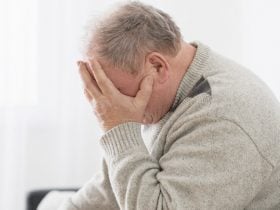Hypnagogic (during falling asleep) and hypnopompic (during awakening)

Hallucinations are vivid [6] acoustic or visual visions similar to sleep that occur during falling asleep or awakening. They are also called “waking dreams” since a person realizes that he is not sleeping yet, but is already beginning to dream. They consist of very vivid dreams that are associated with visual, tactile, and auditory phenomena. Usually, these visions are accompanied by fear and anxiety.
Meyer used the term Pompe (the act of sending) first in 1918 in reference to hypnopompic hallucinations to describe that phenomenon between transitioning from sleep and waking up.
Thus, these hallucinations occur when the individual believes he is awake. The person can see, hear and feel, but cannot move. Therefore, hypnagogic hallucinations are closely related to sleep paralysis.
The incidence of these hypnogogic and hypnopompic hallucinations in the general population occurred in 30%-80% [7] of people affected by narcolepsy. These hallucinations have also been seen in disorders of excessive daytime sleepiness; they have often been seen in patients with sleep paralysis before falling asleep













